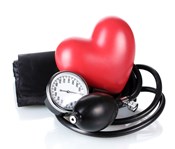How to keep your brain and your heart in healthy working order
“An optimal blood pressure is less than 115 systolic over 75 diastolic,” says Norm Campbell, professor of medicine, community health sciences, and physiology and pharmacology at the University of Calgary in Canada. “As long as a disease hasn’t caused blood pressure to go low, that’s healthy.”
(The target for people who are taking blood-pressure drugs is 140 over 90, notes Campbell. “I wouldn’t want those people to ask their docs to lower their pressure to 115 over 75,” he says.)
Act now to download your FREE copy of Heart and Disease: Fighting Inflammation without cost or obligation.
Why is lower better? “As blood pressure rises, all of the blood vessels in the body are damaged,” says Campbell. “And that causes strokes, heart attacks, heart failure, kidney failure, dementia, impotence, and difficulty with walking.”
Doctors diagnose patients with high blood pressure, or hypertension, when either the upper number reaches 140 or the lower number hits 90.
“Doctors and patients like having goal numbers, but it’s not like at 139 over 89 you have no risk and at 141 over 91 suddenly you have risk,” says Larry Goldstein, director of the Stroke Center at Duke University Medical Center in North Carolina.
In fact, the risk starts to rise well before 140 over 90. “Around 60 to 70 percent of clinical strokes are caused by increased blood pressure,” explains Campbell. “Half of those strokes occur in people with high blood pressure and half strike those with increased-but-not-high blood pressure.”
Increased-but-not-high blood pressure—or prehypertension—ranges from 120 to 139 systolic over 80 to 89 diastolic. “Normal” is less than 120 over less than 80.
“We use different names but the reality is that as blood pressure increases, the damage increases,” says Campbell.
Here’s how you can keep your pressure low, according to a report by the Institute of Medicine, the health arm of the National Academy of Sciences:
- Lose excess weight. If you’re overweight, losing about 10 pounds could trim systolic blood pressure by an average of six points.
- Eat a DASH-like diet. A DASH (Dietary Approaches to Stop Hypertension) diet is built around vegetables, fruit, low-fat dairy, and unsaturated fats instead of added sugars, refined starches, and saturated fat. A DASH diet can lower systolic blood pressure by about six points. (That doesn’t count the drop in pressure from the cut in sodium that’s usually recommended as part of the DASH diet.)







